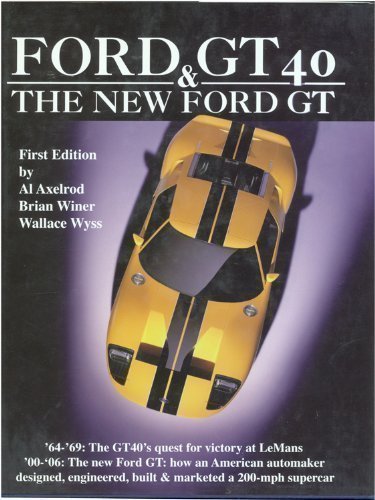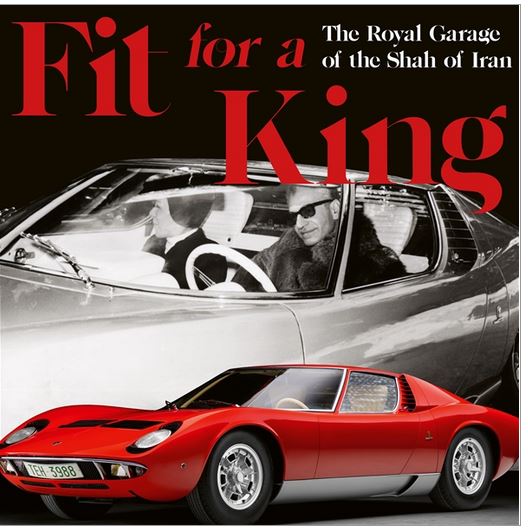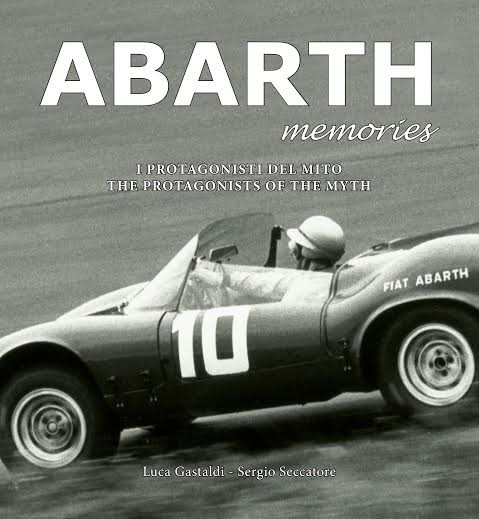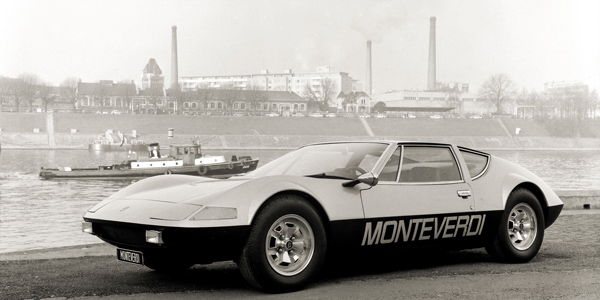
This charming book, packed with unique artwork and engaging photographs, celebrates scooter mania.
In a feast of nostalgia, it takes us through the evolution of the scooter, focusing naturally on all things Lambretta and Vespa, but also covering plenty of obscure and eccentric machinery along the way. Scooter enthusiasm in all its forms receives generous attention, whether as fashion accessory for fifties movie stars, style-conscious transport choice for the Mod generation, or object of worship for today’s retro-loving adherents.
- Scooters take off: rising from the rubble of post-war Italy, Piaggio emerged first with its Vespa (meaning ‘wasp’), soon followed by Innocenti and its Lambretta (named after a Milan suburb).
- Evolution: numerous Lambretta and Vespa models over the years are illustrated and explained, accompanied by a look at the myriad accessories available for them.
- Not just in Italy: a survey of classic-era scooters from Britain (such as Brockhouse Corgi, Sun Wasp and Triumph Tigress), Germany (such as Glas Goggo, Zündapp Bella and Heinkel Tourist), Japan (such as Fuji Rabbit, Mitsubishi Silver Pigeon and Honda Juno) and elsewhere.
- Mod culture: emerging in the sixties and entwined with music and fashion, it made a unique contribution to scooter fandom that has since embraced the globe.
- Scooters as classics: the resurgence of interest since the late seventies and all that has come with it, from restoration and racing to customising and clubs.
- Scooter tales worldwide: Cesare Bataglini’s round-the-world Lambretta odyssey; Mod revivalists in Tokyo; elderly scooters soldiering on in Africa; Indonesia’s Rebel Riders and their crazy Vespa-derived creations; scaling Ben Nevis on a Lambretta; and much more.
Quotes in the book such as “The scooters, clothes and music — an unforgettable time of my life” and “Exciting, fun and carefree days when anything seemed possible” sum up the enduring appeal of classic scooters. Anyone afflicted with the obsession will adore this book.

GIs returning after World War II created an entirely new automotive market niche when they bought surplus Jeeps and began exploring the rugged backcountry of the American West. This burgeoning market segment, which eventually became known as sport utility vehicles (SUVs), numbered about 40,000 units per year with offerings from Jeep, Scout, Toyota, and Land Rover. In 1966, Ford entered the fray with its Bronco, offering increased refinement, more power, and an innovative coil-spring front suspension. The Bronco caught on quickly and soon established a reputation as a solid backcountry performer. In Baja, the legendary accomplishments of racers such as Parnelli Jones, Rod Hall, and Bill Stroppe further cemented the bobtail’s reputation for toughness.
Ford moved upstream with the introduction of the larger Bronco for 1978, witnessing a huge increase in sales for the second-generation trucks. The Twin Traction Beam front end was introduced in the third generation, and further refinements including more aerodynamic styling, greater luxury, and more powerful fuel-injected engines came on board in the generations that followed. Through it all, the Bronco retained its reputation as a tough, versatile, and comfortable rig, both on and off the paved road. With the reintroduction of the Bronco for 2020, Ford is producing a vehicle for a whole new generation of enthusiasts that looks to bring modern styling and performance to the market while building on the 30-year heritage of the first five generations of the Bronco so dearly loved by their owners.
From the development process and details of the first trucks through the 1996 models, author Todd Zuercher shares technical details, rarely seen photos, and highlights of significant models along with the stories of those people whose lives have been intertwined with the Bronco for many years. This book will have new information for everyone and will be a must-have for longtime enthusiasts and new owners alike!

The life of Derek Bennett and the success of Chevron Cars are inextricably entwined in the Chevron Story. After years eking out a living mending cars in back street garages, Derek rose to become one of the world’s leading builders of racing cars. Chevron is the fairy tale story of how he did it.
Stars such as Alain Prost, Niki Lauda, Brian Redman, James Hunt, Keke Rosberg, Nigel Mansell, Graham Hill, Peter Gethin and Jody Scheckter all drove Chevrons. In his book “Chevron – The Derek Bennett Story” – David Gordon explains how they got on.
After travelling many thousands of miles to trace the people who knew and worked with Derek, motor racing journalist David Gordon tells the Derek Bennett story and that of his brainchild Chevron Cars, charting the contributions of the many people who played a part in the company’s meteoric rise to success, and relating why it all happened the way it did.
Derek Bennett designed and built successful racing cars for 13 years from 1965 until his untimely death in 1978, but another four decades later the appeal of those cars shows no sign of waning.

Detailed development history and photos of Ford’s 60’s racing legend, the Ford GT40, and the development and release of the 2005 and 2006 Ford GT.

Stock-car racing star, country singer, and sports broadcaster Kyle Petty shares his familial legacy, intertwined with NASCAR’s founding and history, in Swerve or Die―written with Pulitzer Prize-winner Ellis Henican, the New York Times bestselling coauthor of In the Blink of an Eye.
“Born into racing royalty. The only son of NASCAR’s winningest driver ever. The grandson of one of the sport’s true pioneers. The nephew of our very first Hall of Fame engine builder. It’s quite a family to represent, and through it all, I’ve somehow managed to keep being Kyle.”
Kyle Petty won his very first stock-car race, the Daytona ARCA 200, in 1979 when he was eighteen. Hailed as a third-generation professional NASCAR racer, he became an instant celebrity in circles he had been around all his young life. Despite being the grandson and son of racing champions Lee Petty and Richard Petty, Kyle didn’t inherit innate talent. Working in his family’s North Carolina race shop from an early age, he learned all about car mechanics and maintenance long before he got behind the wheel. And although Kyle continued the family business, driving “Petty blue” colored cars emblazoned with his grandfather’s #42―a number once used by Marty Robbins―his career took a different route than his forebears’.
In Swerve or Die: Life at My Speed in the First Family of NASCAR Racing, Kyle chronicles his life on and off the racetrack, presenting his insider’s perspective of growing up throughout the sport’s popular rise in American culture. In between driving and running Petty Enterprises for thirty years, Kyle took some detours into country music, voiced Cal Weathers in Pixar’s Cars 3, and started his annual motorcycle Kyle Petty Charity Ride Across America. And when his nineteen-year-old son Adam, a fourth-generation racing Petty, tragically lost his life on the track, Kyle founded Victory Junction, a camp for children with chronic and serious medical conditions in Adam’s name―with help from Academy Award-winning actor and motorsports enthusiast Paul Newman.
Filled with NASCAR history, stories of his family’s careers, and anecdotes about some of stock-car racing’s most famous drivers, Kyle’s memoir also tackles the sport’s evolution, discussing how welcoming diverse racers, improving car and track safety features, and integrating green technology will benefit NASCAR’s competitors and fans in the future.

For more than a half century, the Corvette has been celebrated as “America’s sports car” by owners and enthusiasts. Since the first model rolled off the assembly line on June 29, 1953, it has been transformed time and again from a well-intentioned-but-underpowered boulevard cruiser into one of the most iconic sports cars of all time!
How did Harley Earl’s original vision for a two-seat sports car progress through eight distinct generations to become the car that we know and love today? Who were the visionaries responsible for advancing its form and function over the last 70 years? Also, why has the Corvette continued to find commercial success in an ever-changing marketplace when so many other automobiles have come and gone since its creation?
Corvette Concept Cars: Developing America’s Favorite Sports Car answers these questions by delving into the origins of the Chevrolet Corvette and of the countless designers, engineers, drivers, and dreamers responsible for its creation. It explores the personal histories of Corvette’s greatest visionaries (Harley Earl, Zora Arkus-Duntov, and Bill Mitchell) and tells how each of their fates were indelibly intertwined with the rich (and sometimes volatile) history of Chevrolet’s flagship sports car.
This book is an exploration of the Corvette concept cars from the earliest turnstile dream cars and purpose-built racers to the many unique mid-engined concept and research vehicles that preceded the creation of the current production model: the eighth-generation mid-engine Stingray.
Painstakingly researched and written by Corvette historian Scott Kolecki and packed with more than 350 incredible photographs, Corvette Concept Cars: Developing America’s Favorite Sports Car is the quintessential history of the evolution of the Chevrolet Corvette!

Iran has a monarchical history spanning over 2,500 years. Almost all of Iran’s Kings have had vast unchecked powers as they built, and lost, some of the largest empires in history. These vast powers led to Iran’s Kings being referred to as “Shahanshah” meaning literally the “King of Kings”.
With the advent of the automobile, Iran’s Shahanshahs procured some of the world’s most renowned automobiles for their royal garages starting from the first car to be imported to Iran, a Gardner-Serpollet 10 hp, to the famed Maserati 5000GT “Scia de Persia”, specially-ordered and owned by Iran’s last Shah, Mohammad Reza Shah Pahlavi.
In his broad spanning work, Iranian automotive historian Borzou Sepasi traces the royal garage of each Iranian Shah, starting with Mozaffar ad-Din Shah Qajar in 1900, who despite importing the first car, forbade drivers from going faster than carriages, and all the way up to the 1979 revolution. In an important postscript, the fate of many of the cars covered in the book following the end of monarchical rule in Iran, are shown.
The book also intertwines many of the historical events in Iran with the cars of the period, highlighting the special role these vehicles played. Dalton Watson is proud to present this little-known period of unique automotive history to its readers.
230mm x 280mm
-
- Hard cover with dust jacket
- 564 pages
- 1,046 photographs

- Fascinating Land Rover love stories from around the globe
- Includes magnificent new photos
- Portraits of passionate owners – faithful Landy owners discuss their adventures
- Celebrates the many uses of the Land Rover, from a wine-growing estate in South Africa, to the urban jungle in Germany, as well as Land Rovers used by the emergency services, as mobile cafes, and as a means to cross the Alps
On 29th January 2016 the last Land Rover Defender left the factory halls in Solihull (UK) – a Defender 90 Soft Top with heritage outfit – and went directly to the Jaguar Land Rover Collection exhibition. With this, a great story of success ended: the most original of all Land Rover models had been in mass production for 68 years. In 1948 it was developed for agricultural use, but the robustness of the all-wheel drive vehicle got round quickly. The demand never decreased and there were always new versions and engines. Today, 75 percent of all ‘Landies’ ever built are still in use worldwide.
This declaration of love for the British classic presents portraits of all Land Rover generations and of their most passionate owners.

The Bizarre and Disturbing Adventures of Hitler’s Limousine in America
In 1938, Mercedes-Benz began production of the largest, most luxurious limousine in the world. A machine of frightening power and sinister beauty, the Grosser 770K Model 150 Offener Tourenwagen was 20 feet long, seven feet wide, and tipped the scales at 5 tons. Its supercharged, 230-horsepower engine propelled the beast to speeds over 100 m.p.h. while its occupants reclined on glove-leather seats stuffed with goose down. Armor plated and equipped with hidden compartments for Luger pistols, the 770K was a sumptuous monster with a monstrous patron: Adolph Hitler and the Nazi party.
Deployed mainly for propaganda purposes before the war, the hand-built limousines―in which Hitler rode standing in the front seat―motored through elaborate rallies and appeared in countless newsreels, swiftly becoming the Nazi party’s most durable symbol of wealth and power. Had Hitler not so thoroughly dominated the scene with his own megalomania, his opulent limousine could easily have eclipsed him.
Most of the 770Ks didn’t make it out of the rubble of World War II. But several of them did. And two of them found their way, secretly and separately, to the United States.
In The Devil’s Mercedes, author Robert Klara uncovers the forgotten story of how Americans responded to these rolling relics of fascism on their soil. The limousines made headlines, drew crowds, made fortunes and ruined lives. What never became public was how both of the cars would ultimately become tangled in a web of confusion, mania, and opportunism, fully entwined in a story of mistaken identity.
Nobody knew that the limousine touted as Hitler’s had in fact never belonged to him, while the Mercedes shrugged off as an ordinary staff car―one later abandoned in a warehouse and sold off as government surplus―turned out to be none other than Hitler’s personal automobile.
It would take 40 years, a cast of carnies and millionaires, the United States Army, and the sleuthing efforts of an obscure Canadian librarian to bring the entire truth to light.
As he recounts this remarkable drama, Klara probes the meaning of these haunting hulks and their power to attract, excite and disgust. The limousines’ appearance collided with an American populous celebrating a victory even as it sought to stay a step ahead of the war’s ghosts. Ultimately, The Devil’s Mercedes isn’t only the story of a rare and notorious car, but what that car taught postwar America about itself.

SIGNED
In the late 1950s, a young John Morton was transfixed with sports car racing. His dreams of competition eventually led him to enroll, in 1962, in the Shelby School of High Performance Driving. In a bold moment after the last class, Morton asked Carroll Shelby if he might come to work for the newly formed Shelby American. The answer was “Yes, here’s a broom.” Thus ended Morton’s college career and began his long racing career.
Over the next three years, Morton would be a firsthand witness to the evolution of one of the most iconic sports car builders and racing teams of the 1960s. Inside Shelby American is his personal account of a company overflowing with talent, from designer Pete Brock to fabricator extraordinare Phil Remington to drivers like Dan Gurney, Ken Miles, Bob Bondurant, and Phil Hill. The cars were equally captivating: AC Cobra, Mustang GT350, Ford GT, Daytona Coupe. In this book, Morton’s story is intertwined with the memories of other Shelby staffers of the period, revealing through historic photography and an untold perspective the rousing story of America’s most legendary racer and car builder.

Abarth Memories is a new book dedicated to the famous Scorpion trademark.
What you will read in the 240 pages of Abarth Memories is the story of a great company told directly by the protagonists. You will find the portrait of Carlo Abarth – of the man, the businessman, the versatile character that he was – painted by those who worked side by side with him. You will find the stories told by his employees, collaborators, and drivers: men and women who lived the Abarth myth personally. In fact, they did even more than that: they contributed in a significant way to the development of what will always be known as the speed factory.
So, the book is a fascinating trip down memory lane, with the stories of personal experiences intertwined with previously unpublished photographs. The protagonists are subdivided according to their roles in the company: the technicians, drivers, test-drivers, mechanics, test-room workers, clerks. There are also people who worked in the exhaust department and the Autoboutique. At the beginning of the book, there are the recollections – defined as “retrospective” – of Lorenzo Avidano (Carlo Abarth’s right-hand man for more than twenty years) and, the Austrian genius’ third wife, Anneliese Abarth.

West Point’s Class of 1915 is the academy’s most important in history.
The cadets of the United States Military Academy, West Point, are intimately twined with the country’s history. The graduating class of 1915, the class the stars fell on, was particularly noteworthy. Of the 164 graduates that year, 59 (36%) attained the rank of general, the most of any class in. Although Dwight Eisenhower and Omar Bradley, both five-star generals, are the most recognizable, other class members contributed significantly to the Allied victory in World War I, World War II and played key roles either in the post-war U.S. military establishment or in business and industry after World War II, especially in the Korean War and the formation of NATO. For more than half a century, these men exerted tremendous influence on the shaping of modern America, which remains substantial to this day. Individually, the stories of these military and political leaders are noteworthy. Collectively, they are astonishing. West Point, 1915 explores the achievements of this remarkable group.

Founded in 1924 by one-time railroad mechanic Walter P. Chrysler, Chrysler the car actually preceded Chrysler the corporation. With roots entwined with several pioneering automakers and industries, Chrysler made it possible for Detroit to become the Motor City. Featured here in over 200 vintage photographs is the heritage of one of Detroit’s most renowned automakers. Chrysler Heritage: A Photographic History follows the fortunes of the company, its founders, and its products for over a century. Through its acquisition of Dodge and the introduction of Plymouth and DeSoto, Chrysler rose quickly. Renowned for its advanced engineering, it surpassed mighty Ford Motor Company for second place in sales after GM in 1933. Showcasing photographs from the Chrysler archives along with in-depth captions, this new book captures the muscle of Detroit, including the corporation’s unparalleled involvement in the Second World War and the Cold War.

2013 marks a significant milestone for Aston Martin – it’s their 100th Anniversary and the start of their second century in automotive design. This comprehensive history is full of beautiful color photography and detailed illustrations from the past hundred years. Aston Martin: Power, Beauty and Soul reveals the stories behind some of the world’s most desirable motor cars. Each of the more than sixty models constructed since the 1987 Ford acquisition are featured, including concept cars, special edition models and never-before-seen bespoke orders. Each chapter details an individual model’s fascinating history and development and includes comprehensive specifications. This book is also about the dedicated people behind the scenes who brought these magnificent vehicles to life; their stories are intertwined with those of the cars.

Covering almost 100 years of motor racing history, humanity, not simple statistics, is revealed here as the true source of the subjects’ heroism. Take Andre Boillot; so tired at the end of the 1919 Targa Florio, he made a silly mistake, spinning his car backwards across the finish line – yet he still won. Or Grand Prix winners Robert Benoist, William Grover Williams and Jean-Pierre Wimille, all of whom became French resistance fighters during WWII. There’s David Purley’s valiant attempt at rescuing a trapped Roger Williamson by overturning Willamson’s blazing march with his bare hands during the 1973 Grand Prix of Holland. And Alessandro Zanardi, who lost both his legs in a CART accident, yet still came back to win races. The lighter side of motor sport is also here, with Giannino Marzotto, who won the 1950 Mille Miglia wearing an immaculate double-breasted suit. Or Giovanni Bracco, who won the 1952 Mille Miglia as he swigged from a bottle of red wine! There are so many heroes and heroines in this sport. This book is about 100 of them.

Grand Prix racing in the late 1920s through the early 1930s was “owned” by the powerful, state-backed Italian teams with drivers like Nuvolari and Varzi, but by the end of the Thirties, the Germans dominated. Driving Forces by Peter Stevenson tells the human story of the men, their women, and their machines that made the German dominance possible. It is the classic story of daring individuals facing the ultimate challenge both physically and morally as these racing drivers drove under the Nazi swastika, but for themselves.
Driving Forces focuses on the lives of two of the world’s greatest racing drivers: Rudolph “Rudi the Rain Master” Caracciola and Bernd Rosemeyer. The cast of characters reads like the European roll call of the Grand Prix greats: Louis Chiron (France), Achille Varzi (Italy), Giuseppe Campari (Italy), Dick Seaman (Great Britain), Hans Stuck (Germany), and, the greatest of them all, the Maestro Tazio Nuvolari (Italy). Peter Stevenson follows the career of Rudi Caracciola from his youthful “great escape” from the occupying Belgian forces to his first ride with Mercedes and then on to greatness as the top driver for that German team. Caracciola’s life is intertwined with that of his greatest rival Bernd Rosemeyer of the Auto Union team. Rosemeyer’s story is a tragic one of a youthful, talented, and well-loved racer whose love affair with racing and Germany’s outstanding aviatrix, Elly Beinhorn (the Amelia Earhart of Germany), led to his death in 1938.
Driving Forces is also the story of the rivalry between Mercedes Benz and Auto Union, led by the brilliant designs of Dr. Porsche, for the Grand Prix championship of Germany and the world. The ultra-sophisticated supercharged machines of Mercedes, Germany’s premier automaker, faced Porsche’s ingeniously designed rear-engined V-12 and V-16 behemoths. Capable of between 500 and 600 horsepower, the cars easily reached speeds of over 200 miles an hour and in 1938, at speed record attempts on the Autobahn in Germany, the German cars reached speeds of over 270 miles per hour on a regular paved road.
But this is not merely a story about race cars. It is primarily a tale of individual courage – the drivers and their wives and lovers who faced death on and off the race course, for this was a time in Europe when fascism was on the rise sweeping up a continent and then the world. These racing drivers and their loved ones dealt with the risks of racing such powerful machines and of dealing with one of history’s most terrifying dictators – Adolf Hitler. That they survived either of these challenges is a testament to their courage and fortitude – some, however, did not. Driving Forces is the story of those challenges, those successes, and those losses. It is a human story, brilliantly told against the exciting background of international Grand Prix racing and the growing maelstrom of the Third Reich.




















